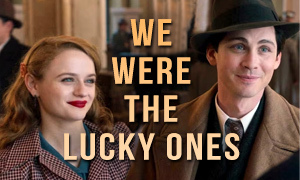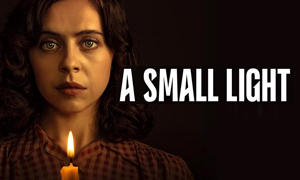1917 was Inspired by a True Story Sam Mendes' Grandfather Told to Him
To what extent is 1917 based on a true story?
Though much of the World War I movie 1917 is fiction, it is loosely based on an account that director Sam Mendes' paternal grandfather, Alfred Mendes, told to him when he was a boy. Mendes described his grandfather's story during a Variety podcast, stating, "I had a story that was a fragment told to me by my grandfather, who fought in the First World War. It's the story of a messenger who has a message to carry. And that's all I can say. It lodged with me as a child, this story or this fragment, and obviously I've enlarged it and changed it significantly. But it has that at its core." It turns out Mendes' grandfather was the messenger in question. -The Times
Born on the Caribbean Island of Trinidad, Mendes' grandfather, Alfred, left for England in 1915 and joined the British Army, enlisting in January 1916 at age 19. After serving with the 1st Battalion Rifle Brigade, he was sent to Oisemont, not far from Dieppe, France, where he trained to be a signaller. He was then sent to the Battle of Passchendaele in Belgium. On October 12, 1917, hundreds of British soldiers, including Alfred Mendes, were tasked with reclaiming the village of Poelcappelle, which is close to the Passchendaele Ridge and had been overtaken by the Germans. British soldiers attacked in the pouring rain and suffered significant losses. 158 of the 484 men in Alfred's battalion were killed, wounded, or unaccounted for. The missing men were scattered across miles of water-filled shell craters in the mud-soaked No Man's Land, unable to communicate their positions.
When Alfred's commanding officer asked for a runner to locate the positions of the surviving men and report back, Alfred volunteered for the dangerous mission. In his memoirs, titled Autobiography of Alfred H Mendes 1897-1991, he wrote of taking the assignment, "I had done a signalling course and although it bore little relationship to the job at hand, I felt myself under an obligation to the battalion. I volunteered."
Alfred located numerous survivors, which enabled them to be rescued. Of the harrowing mission, he wrote, "In spite of the snipers, the machine-gunners and the shells, I arrived back at C Company's shell hole without a scratch but with a series of hair-raising experiences that would keep my grand and great-grandchildren enthralled for nights on end." As a result of his fearless actions, Alfred Mendes was awarded the Military Medal for bravery.
While Alfred Mendes' true story helped to give birth to his grandson's idea for the 1917 movie, whose official synopsis reads, "In a race against time, they must cross enemy territory and deliver a message that will stop a deadly attack on hundreds of soldiers," it seems that much of the film's story has been imagined. Even Alfred running into No Man's Land to locate survivors has in the movie become two men, Blake and Schofield, running across No Man's Land to warn hundreds of soldiers that they're about to head into a trap.
Are the two main characters, Blake and Schofield, based on real people?
No. The 1917 true story reveals that, at best, Dean-Charles Chapman's character, Blake, was very loosely inspired by Sam Mendes' grandfather, Alfred Mendes. Blake's friend in the film, Schofield (George MacKay), also perhaps loosely represents Alfred's experience during the war, but neither character is directly based on Alfred Mendes. In the 1917 movie, the pair are given the mission of crossing deep into enemy territory to get a message to 1,500 soldiers who are unknowingly headed into a deadly trap, including Blake's own brother (portrayed by Richard Madden).
Was Sam Mendes' grandfather injured during World War I?
Yes. Director Sam Mendes' grandfather, whose true story inspired the idea for the movie, was injured in May 1918 when he accidentally inhaled poisonous gas used by the German army during their attack at La Bassee Canal near Béthune, France. Alfred Mendes was sent back to Britain, where he recovered at a hospital in Sheffield.
Following the war, he returned to Trinidad and was employed in his wealthy father's provisions business, writing poetry and fiction on the side. In 1933, he headed to New York City where he joined literary salons and became acquainted with American writers like William Faulkner, Thomas Wolfe and William Saroyan. He returned to Trinidad in 1940, giving up writing to become a civil servant. He worked as General Manager of the Port Services Department. He was married three times; he was widowed when his first wife died of pneumonia, his second marriage ended in divorce in 1938, and he married his third wife, Ellen Parachini, in 1940 while still in New York. The marriage lasted until they both died in 1991 of natural causes while living in Barbados.
Are the characters portrayed by Colin Firth and Benedict Cumberbatch based on real people?
No, we've found no evidence that they represent real people. The supporting characters in the 1917 movie, including the commanding officer portrayed by Colin Firth and the characters portrayed by Benedict Cumberbatch, Richard Madden and Mark Strong, all appear to be fictional.
Are the battles depicted in 1917 based on real-life WWI battles that Sam Mendes' grandfather fought in?
The movie opens just after the German army purposely fell back to the Hindenburg Line, which was shorter and easier to defend. This real-life strategic withdrawal was known as Operation Alberich. In the mostly fictional movie, the Second Battalion of the Devonshire Regiment mistakenly believes that the Germans are in retreat. The battalion is preparing to attack without knowing that the Germans are waiting to overwhelm them. With the lines of communication cut, two British soldiers are tasked with hand-delivering a message to call off the attack.
The fighting in the movie was inspired by (but unfolds prior to) the Battle of Passchendaele, also known as the Third Battle of Ypres, which took place from July 31, 1917 to November 10, 1917. Both the British and the Germans suffered heavy casualties. In the end, the battle resulted in the German army being pinned to Flanders and suffering unsustainable casualties. As stated earlier, Alfred Mendes fought in the battle, and his battalion suffered heavy losses while trying to take the village of Poelcappelle from the Germans.







